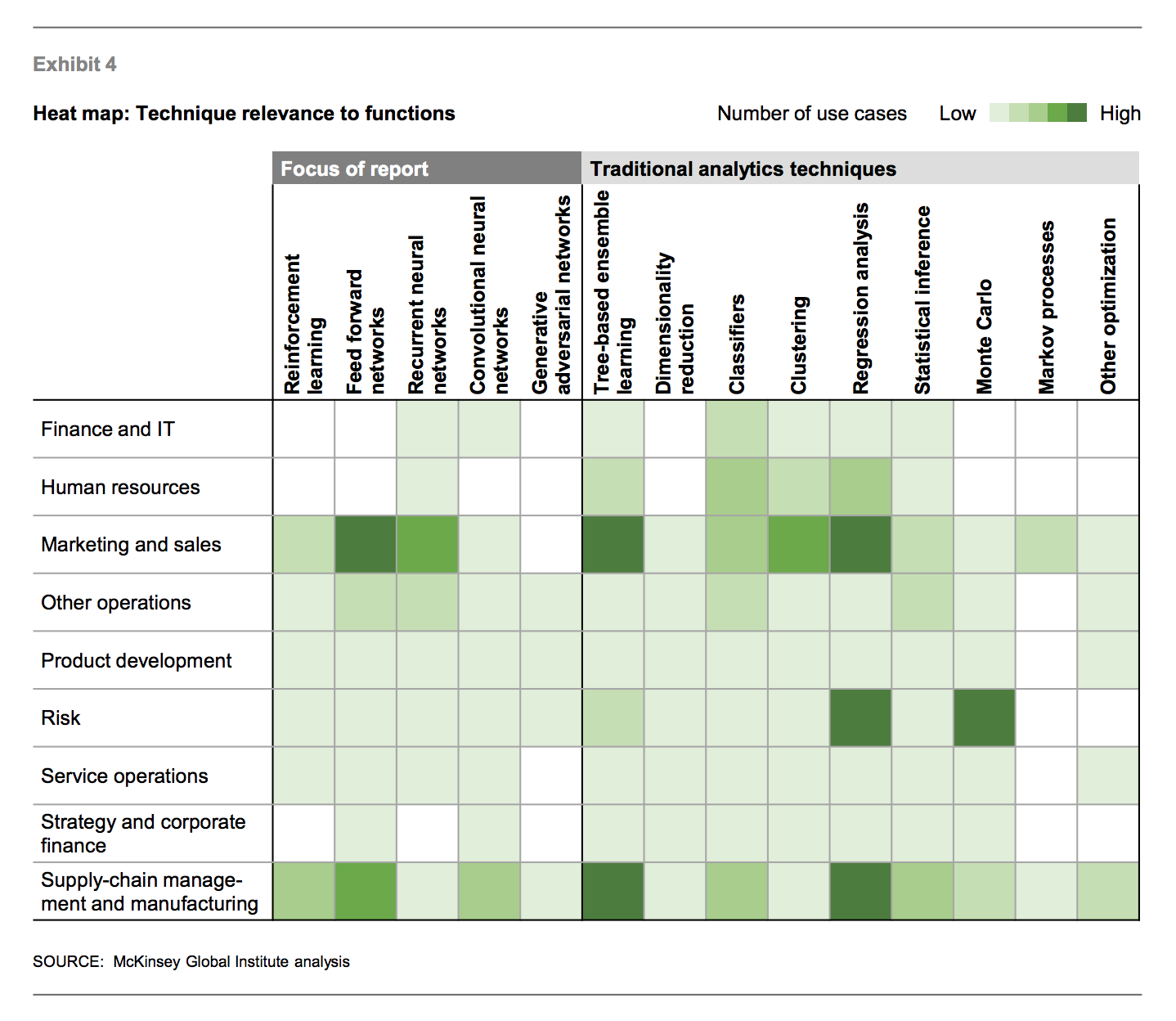McKinsey & Co has a huge new report out about AI. It’s definitely worth a look if you need to get smart on AI in 20 minutes.
They looked at over 400 use cases across 19 industries and 9 business functions to create a detailed survey of how businesses are using Artificial Intelligence, in what industries, for what use-cases, what type of AI, and the “economic potential of advanced AI techniques across industries and business functions.”
AI, which for the purposes of this paper we characterize as “deep learning” techniques using artificial neural networks, can be used to solve a variety of problems. Techniques that address classification, estimation, and clustering problems are currently the most widely applicable in the use cases we have identified, reflecting the problems whose solutions drive value across the range of sectors.
I’m skeptical about the hype around AI right now and some of their findings support my stance. However, I did enjoy the first section where they draw the line between what they consider to be Artificial Intelligence and not, a brief description of each of the current techniques, and the problems that they’re good at solving.
Building on this educational foundation and the data they collected from their 400 use cases, the report shows heat maps of different techniques across both different business functions and industries.

What’s interesting is that where Artificial Intelligence is making the most progress is in areas where pseudo-AI techniques are already working:
The greatest potential for AI we have found is to create value in use cases in which more established analytical techniques such as regression and classification techniques can already be used, but where neural network techniques could provide higher performance or generate additional insights and applications. This is true for 69 percent of the AI use cases identified in our study. In only 16 percent of use cases did we find a “greenfield” AI solution that was applicable where other analytics methods would not be effective.
Great report. Check it out – especially pages 2-6.
Oh, and there’s a cool history of Artificial Intelligence on page 3.